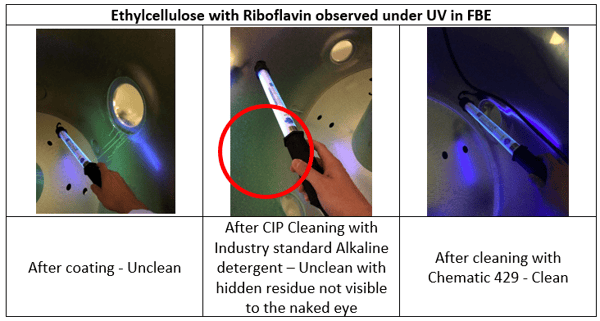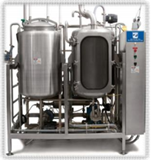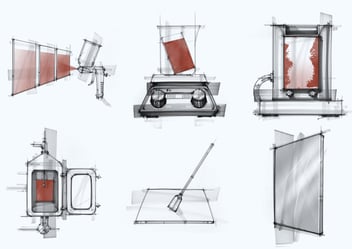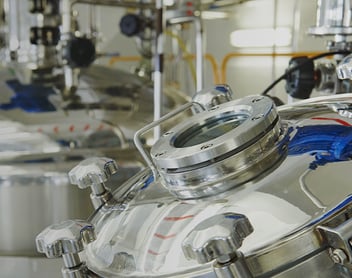How to Clean Ethylcellulose?
Ethylcellulose in Pharmaceutical and Nutraceutical Manufacturing
Ethylcellulose is chemically a polymer derived from cellulose, which is GRAS listed and thus, is widely used, not only in the Pharmaceutical but also in the Nutraceutical & Food Industry as an extended-release or sustained-release polymer, mainly in the form of tablet/pellet coating formulation. It is also used in granulation as a tablet filler for sustained release properties.
In topical formulations, ethylcellulose is used as a thickening agent in creams, lotions, or gels, provided an appropriate solvent is used. Ethylcellulose has been studied as a stabilizer for emulsions.
It is available in multiple viscosity grades, from 3 to 300 mPas in the form of a hydrophobic powder that could be dissolved in inorganic solvents as well as aqueous dispersions.
How to Clean Ethylcellulose?
By its chemistry, it is insoluble at any pH that occurs in organisms, but it undergoes swelling in the presence of gastric fluids. It is soluble in organic solvents but does not dissolve in water, glycerin, or propylene glycol. These properties make the cleaning of ethylcellulose particularly difficult. As this polymer is colorless by itself, it could leave behind a hidden residue after cleaning, on drying that would be visible only on hydration.
Chemical cleaning of ethylcellulose could be done with either a solvent or a detergent specially designed to chemically break down & suspend the residue.
Current Industry Trends
Traditional cleaning procedure uses water at high temperatures, highly alkaline detergent or solvents to clean ethylcellulose residues from coating pans, fluid bed processors, preparation equipment, or granulators.
- As the polymer swells on hydration, the most common method employed to clean it is soaking with water / Alkaline detergent and vigorously scrubbing it off the equipment walls when it is softened.
- Cleaning with solvents requires manual application to all surfaces with the ethylcellulose residue and scrubbing before the solvent volatilizes.
The current cleaning methods are not ideal, and the manufacturing might face at least one or more disadvantages
- Manual cleaning processes make effective and efficient cleaning difficult to achieve and turn cleaning of large equipment like fluid beds and perforations in coating pan into a cumbersome task and time-consuming task, leading to high cleaning downtimes.
- If CIP/WIP is used, thinner residues might come off as large flakes or sheets that do not dissolve, but block coating pan perforations or get re-deposited in the hard-to-reach areas of the CIP/WIP circuit
- If solvents are used for cleaning of pigmented ethylcellulose residue, they may dissolve the polymer, leaving behind the insoluble pigment haze that would build up over time and need heavy scrubbing to clean off.
- Due to the use of highly alkaline detergents or solvents, EHS concerns could arise. For manual cleaning, this is a safety risk
- Depending on the operators and their scrubbing methods, cleaning time may vary, and it is easy to miss hard-to-clean areas where residues could remain behind, possibly causing cross-contamination or microbial growth over time.
Even if the machine is equipped with the state-of-the-art CIP or WIP system, the scrubbing requirement makes automated cleaning impossible.
Efficient Cleaning of Ethylcellulose with Chematic® Cleaners
Brands: Aquacoat ECD; Aqualon; Ashacel; E462; Ethocel; ethylcellulosum; Surelease
Recommended detergent/cleaner: Chematic® 429

Recommended Procedure:
-
Water Pre-rinse (optional) at ambient temperature for 5 – 10 minutes. Do not use hot water for pre-rinse
-
Dilute the detergent to ~ 6% v/v (this can be optimized between 4 – 8 % depending on the residue amount and thickness) with hot water (40 - 50° C for manual / fill, soak and agitate, ~ 55 - 65° C for CIP – Automated) and soak the equipment (soiled portion) for 30 minute – 1 hour with mild agitation (blade rotation for RMG / Pan rotation for coater / Recirculation through Spray balls in CIP for equipment like FBE/ stirring for lab scale).
-
Ensure that the entire residue is soaked for the given time period as un-soaked residue doesn’t easily get cleaned even with scrubbing
-
The polymer may come out as flakes but will dissolve within 30-60 minutes in Chematic® 429 solution
-
-
Post-rinse is to be done immediately after the detergent solution is drained to prevent the drying of the detergent solution on to the surface of the equipment. For manual cleaning, gentle scrubbing/wiping is to be done before rinsing.
Please note that the process steps outlined are meant to be starting points for cleaning cycle development. To discuss a cleaning process based on your coating process and cleaning capabilities please reach out, we'd love to hear from you!




